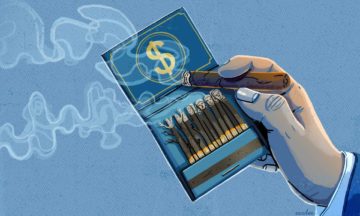Alexander Chee in The New Republic:
 Cynthia Ozick’s surprisingly scalding and chaotic 1971 review of Maurice in Commentary, “FORSTER AS HOMOSEXUAL,” in which she calls Forster’s posthumous revelation of his sexuality an “audacious slap in the face,” includes a decent one-paragraph summation of what we might call the first public Forster, the one the public thought they knew when they mourned him:
Cynthia Ozick’s surprisingly scalding and chaotic 1971 review of Maurice in Commentary, “FORSTER AS HOMOSEXUAL,” in which she calls Forster’s posthumous revelation of his sexuality an “audacious slap in the face,” includes a decent one-paragraph summation of what we might call the first public Forster, the one the public thought they knew when they mourned him:
He endured the mildest of bachelor lives, with, seen from the outside, no cataclysms. He was happiest (as adolescents say today, he “found himself”) as a Cambridge undergraduate, he touched tenuously on Bloomsbury, he saw Egypt and India (traveling always, whether he intended it or not, as an agent of Empire), and when his mother died returned to Cambridge to live out his days among the undergraduates of King’s. He wrote what is called a “civilized” prose, sometimes too slyly decorous, occasionally fastidiously poetic, often enough as direct as a whip. His essays, mainly the later ones, are especially direct: truth-telling, balanced, “humanist”—kindhearted in a detached way, like, apparently, his personal cordiality. He had charm: a combination of self-importance (in the sense of knowing himself to be the real thing) and shyness. In tidy rooms at King’s (the very same College he had first come up to in 1897) Forster in his seventies and eighties received visitors and courtiers with memorable pleasantness, was generous to writers in need of a push (Lampedusa among them), and judiciously wrote himself off as a pre-1914 fossil. Half a century after his last novel the Queen bestowed on him the Order of Merit. Then one day in the summer of 1970 he went to Coventry on a visit and died quietly at ninety-one, among affectionate friends.
His bachelor life, however, was not mild, and underwent several cataclysms—and “seen from the outside” barely admits what a closeted life could hide.
More here.

 For many of us over the last year and more, our waking experience has, you might say, lost a bit of its variety. We spend more time with the same people, in our homes, and go to fewer places. Our stimuli these days, in other words, aren’t very stimulating. Too much day-to-day routine, too much familiarity, too much predictability. At the same time, our dreams have gotten more
For many of us over the last year and more, our waking experience has, you might say, lost a bit of its variety. We spend more time with the same people, in our homes, and go to fewer places. Our stimuli these days, in other words, aren’t very stimulating. Too much day-to-day routine, too much familiarity, too much predictability. At the same time, our dreams have gotten more  The works carry a metaphysical meaning, as well as a geographical one. With the skulls and antlers, bones and shells, O’Keeffe creates a secular iconography. For her, these subjects did not represent death but something vital and lasting. A bone found in the desert is like a shell found on the beach: both are forms defined by function, both are beautiful and enduring evidence of life. O’Keeffe’s images and juxtapositions are mysterious, but she wasn’t a member of the Surrealist movement, which deliberately juxtaposed objects without connections to one another. Her intention was quite different: these objects have a deep connection—one that we recognize on an intuitive level. “Pelvis with the Distance,” from 1943, shows a smooth, white bone, all curves and slopes and openings. It is suspended, high in the air, above a line of low, undulant blue hills. This physical juxtaposition—the celestial locus of the bone, the earth-hugging horizon below—creates a majestic sweep of space. O’Keeffe places the viewer aloft, level with the bone, high up in the empyrean. The supernatural height, the mystery, the hallucinatory beauty of the object—all combine to create a sense of the sublime.
The works carry a metaphysical meaning, as well as a geographical one. With the skulls and antlers, bones and shells, O’Keeffe creates a secular iconography. For her, these subjects did not represent death but something vital and lasting. A bone found in the desert is like a shell found on the beach: both are forms defined by function, both are beautiful and enduring evidence of life. O’Keeffe’s images and juxtapositions are mysterious, but she wasn’t a member of the Surrealist movement, which deliberately juxtaposed objects without connections to one another. Her intention was quite different: these objects have a deep connection—one that we recognize on an intuitive level. “Pelvis with the Distance,” from 1943, shows a smooth, white bone, all curves and slopes and openings. It is suspended, high in the air, above a line of low, undulant blue hills. This physical juxtaposition—the celestial locus of the bone, the earth-hugging horizon below—creates a majestic sweep of space. O’Keeffe places the viewer aloft, level with the bone, high up in the empyrean. The supernatural height, the mystery, the hallucinatory beauty of the object—all combine to create a sense of the sublime. With admirable clarity, Sumantra Bose’s Kashmir at the Crossroads helps to explain the tensions and the motives of the various parties involved in the intractable Kashmir conflict, including Chinese cartographers, Indian Hindu nationalists, Pakistani intelligence officers, violent jihadists and the group that barely gets a look in, the Kashmiris themselves. Landlocked and surrounded by three antagonistic nuclear powers with claims on their land, the Kashmiris are always the last ones to have a say over their own future.
With admirable clarity, Sumantra Bose’s Kashmir at the Crossroads helps to explain the tensions and the motives of the various parties involved in the intractable Kashmir conflict, including Chinese cartographers, Indian Hindu nationalists, Pakistani intelligence officers, violent jihadists and the group that barely gets a look in, the Kashmiris themselves. Landlocked and surrounded by three antagonistic nuclear powers with claims on their land, the Kashmiris are always the last ones to have a say over their own future. A young musician attends the conservatory, a young artist studies at the academy, but the young writer has nowhere to go. You view this as an injustice. Not so. Schools for musicians and painters provide first and foremost technical knowledge you’d be hard pressed to acquire on your own in relatively short order. What is the writer to learn at his institute? Any ordinary school is all it takes to push a pen across the page. Literature holds no technical secrets, or at least secrets that can’t be plumbed by a gifted amateur (since no diploma will help the talentless). It’s the least professional of all artistic callings. You may take up writing at twenty or seventy. You may be a professor or an autodidact. You may skip your high school diploma (like Thomas Mann) or receive honorary doctorates at multiple universities (again like Mann). The road to Parnassus is open to all. In principle at least, since genes have the final say.
A young musician attends the conservatory, a young artist studies at the academy, but the young writer has nowhere to go. You view this as an injustice. Not so. Schools for musicians and painters provide first and foremost technical knowledge you’d be hard pressed to acquire on your own in relatively short order. What is the writer to learn at his institute? Any ordinary school is all it takes to push a pen across the page. Literature holds no technical secrets, or at least secrets that can’t be plumbed by a gifted amateur (since no diploma will help the talentless). It’s the least professional of all artistic callings. You may take up writing at twenty or seventy. You may be a professor or an autodidact. You may skip your high school diploma (like Thomas Mann) or receive honorary doctorates at multiple universities (again like Mann). The road to Parnassus is open to all. In principle at least, since genes have the final say.
 The Nobel Prize goes to David Card, Joshua Angrist and Guido Imbens. If you seek their monuments look around you. Almost all of the empirical work in economics that you read in the popular press (and plenty that doesn’t make the popular press) is due to analyzing natural experiments using techniques such as difference in differences, instrumental variables and regression discontinuity. The techniques are powerful but the ideas behind them are also understandable by the person in the street which has given economists a tremendous advantage when talking with the public. Take, for example, the famous minimum wage study of
The Nobel Prize goes to David Card, Joshua Angrist and Guido Imbens. If you seek their monuments look around you. Almost all of the empirical work in economics that you read in the popular press (and plenty that doesn’t make the popular press) is due to analyzing natural experiments using techniques such as difference in differences, instrumental variables and regression discontinuity. The techniques are powerful but the ideas behind them are also understandable by the person in the street which has given economists a tremendous advantage when talking with the public. Take, for example, the famous minimum wage study of  Early evening in late summer, the golden hour in the village of East Hampton. The surf is rough and pounds its regular measure on the shore. At the last driveway on a road ending at the beach, a cortège of cars—S.U.V.s, jeeps, candy-colored roadsters—pull up to the gate, sand crunching pleasantly under the tires. And out they come, face after famous face, burnished, expensively moisturized: Jerry Seinfeld, Jimmy Buffett, Anjelica Huston, Julianne Moore, Stevie Van Zandt, Alec Baldwin, Jon Bon Jovi. They all wear expectant, delighted-to-be-invited expressions. Through the gate, they mount a flight of stairs to the front door and walk across a vaulted living room to a fragrant back yard, where a crowd is circulating under a tent in the familiar high-life way, regarding the territory, pausing now and then to accept refreshments from a tray.
Early evening in late summer, the golden hour in the village of East Hampton. The surf is rough and pounds its regular measure on the shore. At the last driveway on a road ending at the beach, a cortège of cars—S.U.V.s, jeeps, candy-colored roadsters—pull up to the gate, sand crunching pleasantly under the tires. And out they come, face after famous face, burnished, expensively moisturized: Jerry Seinfeld, Jimmy Buffett, Anjelica Huston, Julianne Moore, Stevie Van Zandt, Alec Baldwin, Jon Bon Jovi. They all wear expectant, delighted-to-be-invited expressions. Through the gate, they mount a flight of stairs to the front door and walk across a vaulted living room to a fragrant back yard, where a crowd is circulating under a tent in the familiar high-life way, regarding the territory, pausing now and then to accept refreshments from a tray. Researchers at the DZNE and the University Medical Center Göttingen (UMG) have identified molecules in the blood that can indicate impending dementia. Their findings, which are presented in the scientific journal EMBO Molecular Medicine, are based on human studies and laboratory experiments. University hospitals across Germany were also involved in the investigations. The biomarker described by the team led by Prof. André Fischer is based on measuring levels of so-called microRNAs. The technique is not yet suitable for practical use; the scientists therefore aim to develop a simple blood test that can be applied in routine medical care to assess dementia risk. According to the study data, microRNAs could potentially also be targets for dementia therapy.
Researchers at the DZNE and the University Medical Center Göttingen (UMG) have identified molecules in the blood that can indicate impending dementia. Their findings, which are presented in the scientific journal EMBO Molecular Medicine, are based on human studies and laboratory experiments. University hospitals across Germany were also involved in the investigations. The biomarker described by the team led by Prof. André Fischer is based on measuring levels of so-called microRNAs. The technique is not yet suitable for practical use; the scientists therefore aim to develop a simple blood test that can be applied in routine medical care to assess dementia risk. According to the study data, microRNAs could potentially also be targets for dementia therapy. What is weather? Its etymology is not, as one may have hoped, connected to “whether”, as in “that which may be either one way, or the other” —“Whether the picnic is on or not depends on whether it rains”—, though both words have equally fascinating Germanic pedigrees. The modern German Wetter originally described the sort of ferocious wind you might encounter at a mountain peak, and later took on the primary connotation of “bad weather”, or, as is said in German, Unwetter, where the prefix that ordinarily signifies negation or absence, Un-, comes instead to indicate intensification (as in Untier — seemingly “non-animal” but literally “monster”, or Unkraut — seemingly “non-herb” but literally “weed”). At the outset then we may say that weather, strangely, is something the negative instances of which are also its paradigm instances. Yet the German and English words for “weather” are outliers among European languages, while far more commonly the term that is used is the same as the word for “time”: French le temps, Romanian timpul (or the variant Slavic-rooted vremea); even the Finno-Ugric pocket of Hungary calls both time and weather by the same word: idő. Already from this lexical tour we may infer that at some earlier stage what we today call “weather” was conceptualized primarily in a phenomenological sense, as the most basic experience of “in-the-world-ness”. Yet the overlapping history of these two concepts, time and weather, should only make us wonder at the profoundly different connotations each would come to have in late modernity.
What is weather? Its etymology is not, as one may have hoped, connected to “whether”, as in “that which may be either one way, or the other” —“Whether the picnic is on or not depends on whether it rains”—, though both words have equally fascinating Germanic pedigrees. The modern German Wetter originally described the sort of ferocious wind you might encounter at a mountain peak, and later took on the primary connotation of “bad weather”, or, as is said in German, Unwetter, where the prefix that ordinarily signifies negation or absence, Un-, comes instead to indicate intensification (as in Untier — seemingly “non-animal” but literally “monster”, or Unkraut — seemingly “non-herb” but literally “weed”). At the outset then we may say that weather, strangely, is something the negative instances of which are also its paradigm instances. Yet the German and English words for “weather” are outliers among European languages, while far more commonly the term that is used is the same as the word for “time”: French le temps, Romanian timpul (or the variant Slavic-rooted vremea); even the Finno-Ugric pocket of Hungary calls both time and weather by the same word: idő. Already from this lexical tour we may infer that at some earlier stage what we today call “weather” was conceptualized primarily in a phenomenological sense, as the most basic experience of “in-the-world-ness”. Yet the overlapping history of these two concepts, time and weather, should only make us wonder at the profoundly different connotations each would come to have in late modernity. It is more than 150 years since scientists proved that
It is more than 150 years since scientists proved that  Whenever there’s a leak of documents from the remote islands and obscure jurisdictions where rich people hide their money, such as this week’s release of the
Whenever there’s a leak of documents from the remote islands and obscure jurisdictions where rich people hide their money, such as this week’s release of the  Hip-hop artist Childish Gambino (aka actor
Hip-hop artist Childish Gambino (aka actor  Not long after I moved into my first apartment, I started keeping an archive.
Not long after I moved into my first apartment, I started keeping an archive. Jonathan Franzen, the novelist who has been lauded and reviled as few figures in contemporary American letters ever are,
Jonathan Franzen, the novelist who has been lauded and reviled as few figures in contemporary American letters ever are,